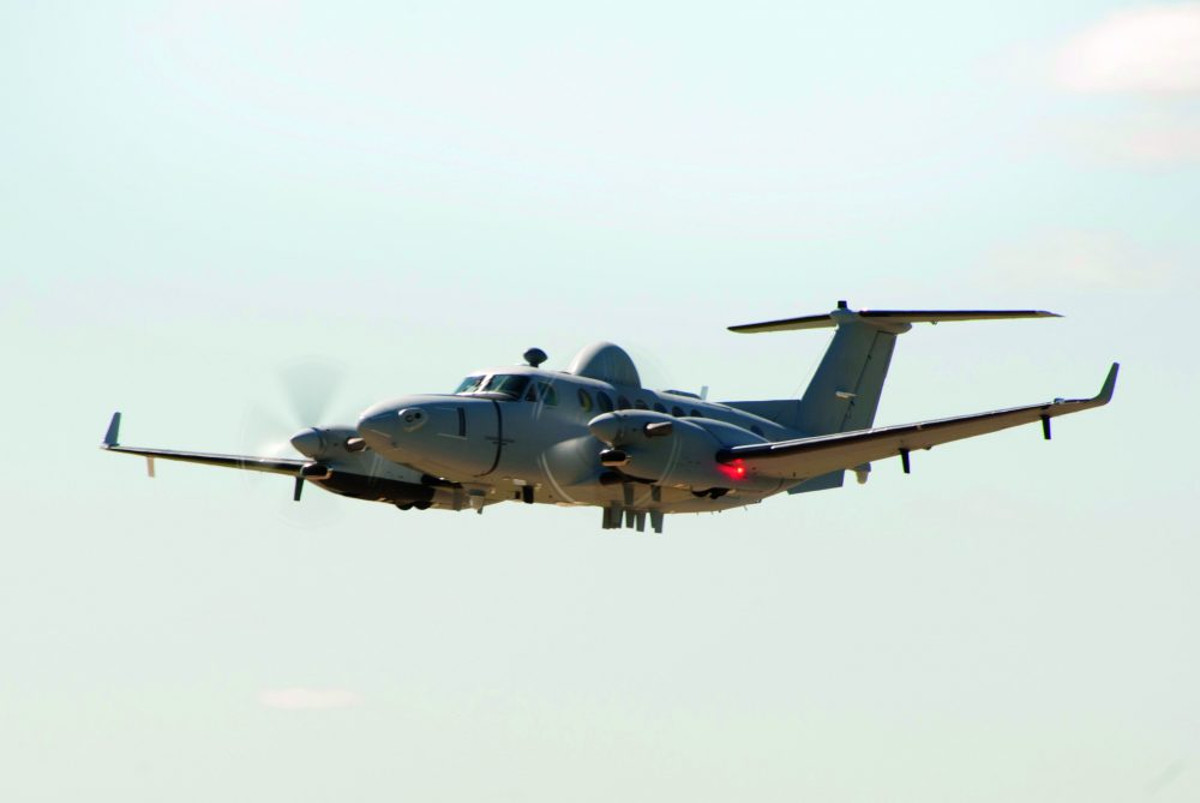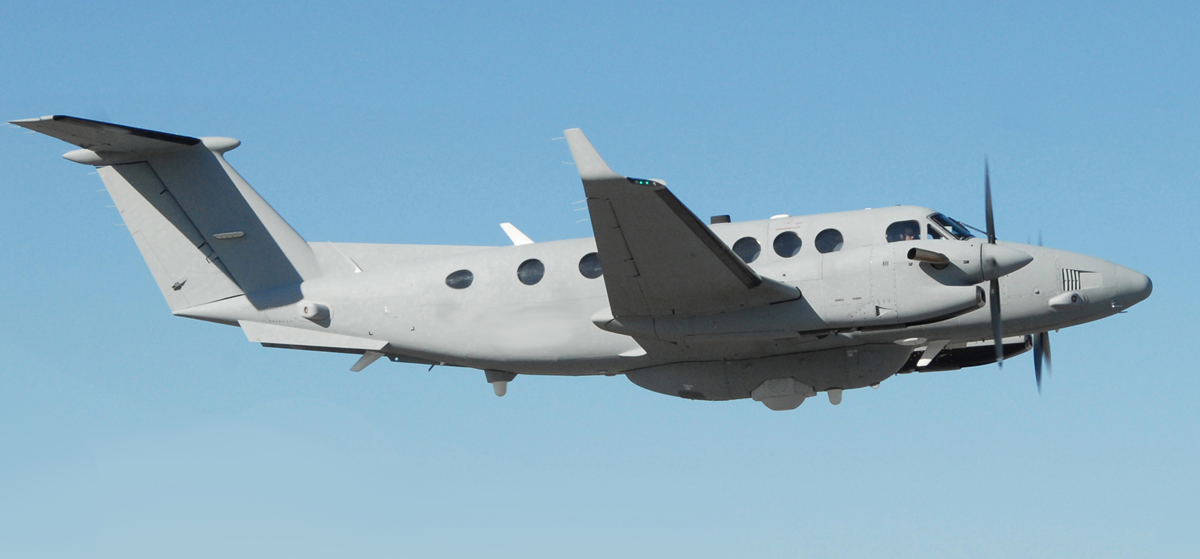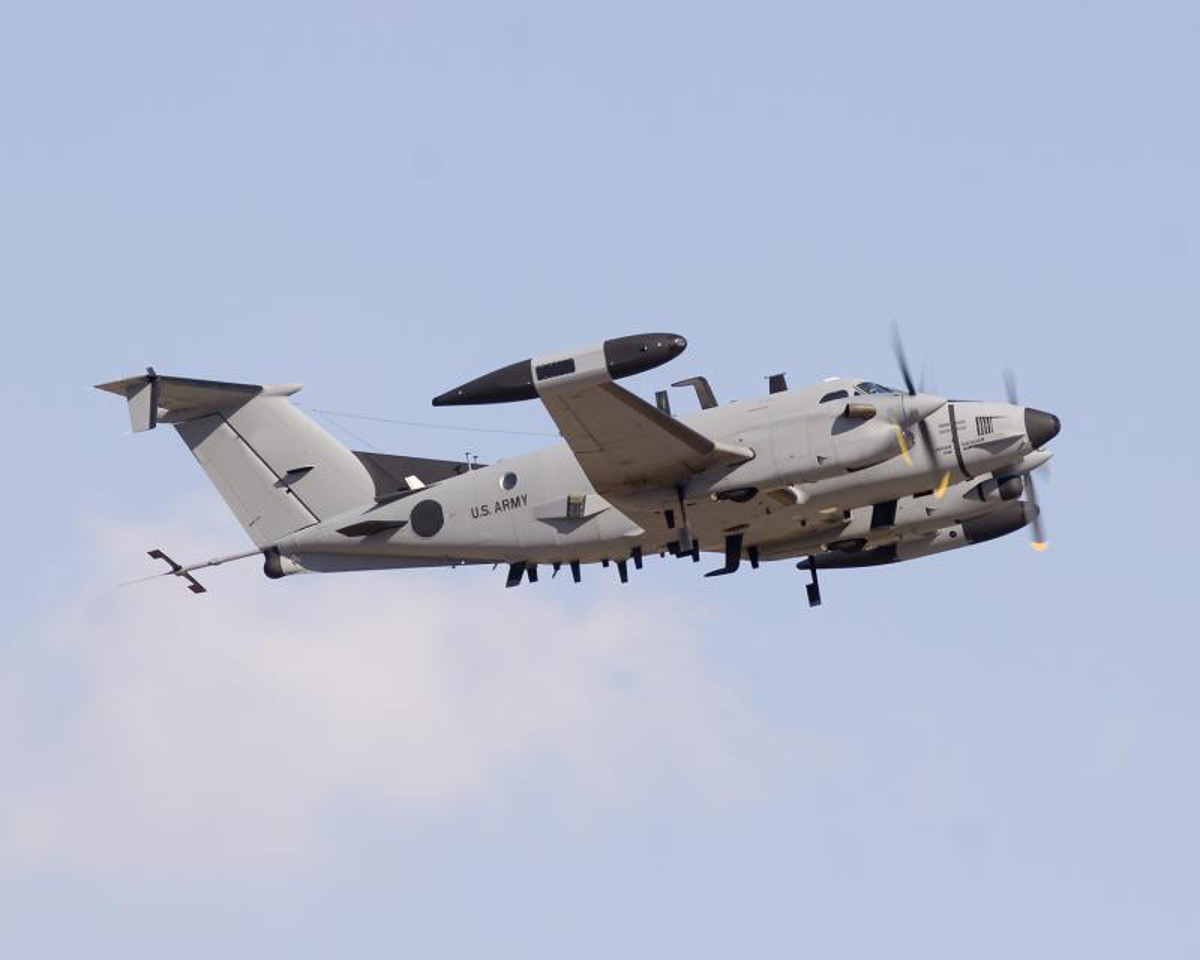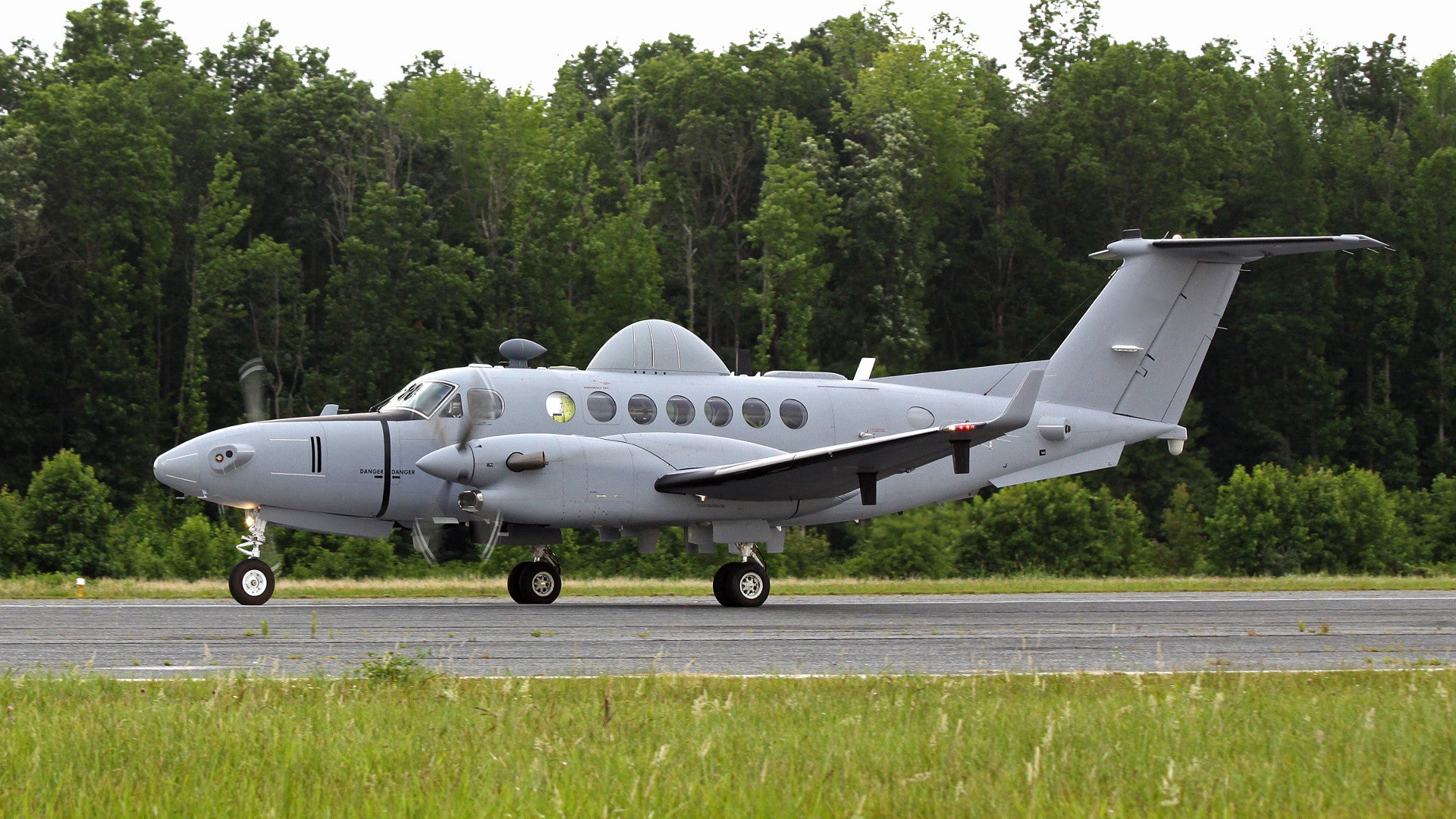The first version of the U.S. Army’s newest spy plane is in action in Africa and Latin America. At the same time, the service is finishing tests of three additional sub-variants in Arizona.
On March 12, 2017, Scout Warrior first reported these overseas deployments. The War Zone subsequently learned only some of the four signals intelligence-focused versions of the Enhanced Medium Altitude Reconnaissance and Surveillance System (EMARSS-S) were snooping abroad.
In an Email, U.S. Army Lt. Col. Sean Smith confirmed this particular model was supporting U.S. Africa Command (AFRICOM) and U.S. Southern Command (SOUTHCOM) operations. “There are no other EMARSS variants fielded or deployed at this time,” he added.
Despite its name, the EMARSS-S has a suite of signal-snooping gear to track and listen in on enemy communications, as well as the ability to record full-motion video during the day or at night. Each aircraft also has work stations connected to the controversial Distributed Common Ground System – Army (DCGS-A) intelligence data network, which is supposed to help collect, compile, and distribute information rapidly across units.

Sending the aircraft to work with AFRICOM and SOUTHCOM makes perfect sense for early deployments. The regions these commands work are relatively low threat environments for American aircraft, but offer no shortage of work tracking drug smugglers, terrorists, and insurgents in remote areas.
In Central and South America and Africa, Army spy planes such as the RC-12X Guardrail Common Sensor (GRCS) and EO-5C Airborne Reconnaissance Low – Multisensor (ARL-M) already fly routine missions, in cooperation with other aircraft and personnel from the U.S. Air Force, American law enforcement agencies, local security forces, and private contractors. After 9/11, the Pentagon found renewed interest in monitoring terrorist groups and potential hotspots in Africa with a similar mix of assets.
In addition, the Army plans to ultimately replace a slew of older GRCS models – the RC-12Hs, -Ks, -Ns, and Ps, all set up to gather signals intelligence only – with EMARSS variants. This process could begin as early as the end of 2017. Smith noted in his Email that the service intends to field the remaining types after follow-on evaluations at Fort Huachuca wrap up on March 31, 2017.
These plans, plus the EMARSS-S deployment, show the Army has made significant progress with a program that was almost the victim of budget cuts in 2012. In 2010, the service hired Boeing to build the first four aircraft, which eventually became the EMARSS-S. However, the Government Accountability Office subsequently told Army officials to put the work on hold and review concerns about whether the project fit with the service’s budget and priorities. Apparently, it did not.

As part of its annual budget proposal in February 2012, the Army announced it would cancel the program entirely and send the planes Boeing had built off to the Air Force, instead. This would save an estimated $1.2 billion.
“I can’t really speak to anything further on recon aircraft,” Barbara Bonessa, Deputy Director, Army Budget, said at a press conference. A reporter had asked her how the Army expected to meet ever increasing demands for intelligence aircraft, especially as the service’s existing Guardrails were only getting older. The Army’s 3rd Military Intelligence Battalion in South Korea had received the first RC-12H carrying the Guardrail Common Sensor system in 1988.
So, in March 2013, the Army crafted a new plan. It would keep the four EMARSS aircraft Boeing had already built. In addition, they would consult with industry partners on what options were available to buy at least a dozen more planes on the cheap.
This is where the other three EMARSS variants came in. Instead of buying all-new systems, the Army decided to purchase a dozen spy planes from contractors who were already flying them over Afghanistan and Iraq. As part of its own cost-cutting measures, the Air Force would send along eight MC-12W Liberty aircraft.

The previously contractor-operated planes were a mix of Constant Hawks, Tactical Operations (TACOP), and Vehicle and Dismount Exploitation Radar (VADER) types. The five Constant Hawks had day and night-capable video cameras only.
Three TACOPs carried light detection and ranging (LIDAR) sensors ideal for detecting subtle changes on ground surfaces that could indicate someone has recently buried something such as an improvised explosive device. Northrop Grumman’s AN/ZPY-5 VADER can better track mobile targets and produce detailed radar imagery showing distinct individuals entering and existing vehicles – good for trying to monitor specific terrorists or insurgents.
The Army would rename the Constant Hawks and TACOPs systems as EMARSS-Gs, standing for “geo-intelligence.” The VADERS would become EMARSS-Vs. The two variants would have basic signals intelligence systems to make them more versatile, as well.
The Army would then transform the Liberties into multi-intelligence EMARSS-M, with a combination of signal-grabbing equipment and powerful video cameras. All the EMARSS types would get Army-standard gear, including new data links, DCGS-A work stations and self-defense equipment, according to one official briefing in 2015.

The purpose-built EMARSS planes morphed into EMARSS-S to differentiate them from their new cousins. However, regardless of specific configuration, the U.S. military would refer to all the modified twin-engine Beechcraft King Airs carrying the various pieces of equipment as MC-12S.
The concept of fielding multiple types of aircraft as a single aerial surveillance “system” and spacing out their development and deployment is not new to the Army. The Cerfirm Leader communications intelligence system spread different equipment across three different RU-21 types and the service fielded four slightly different versions of the GRCS between 1988 and 1998 before developing the more uniform RC-12X model.
It is also possible other aircraft may be included in the EMARSS program. On March 5, 2016, a secretive Army Beechcraft King Air spy plane, wearing a civilian-style paint job and registration N6351V crashed in northern Iraq. In 2015, the Army released a table of all Army special electronic mission aircraft (SEMA) as part of a larger maintenance contract, which listed it as one of the MC-12W Liberties destined for conversion, but also mentions the eight future EMARSS-M aircraft. It remains unclear what unit was flying the plane when it crashed or what its particular configuration might have been at the time.
What we do know for sure is the first MC-12S EMARSS are now in action. By the end of 2017, the bulk of the planes may be flying over foreign battlefields, too.
Contact the author: joe@thedrive.com
